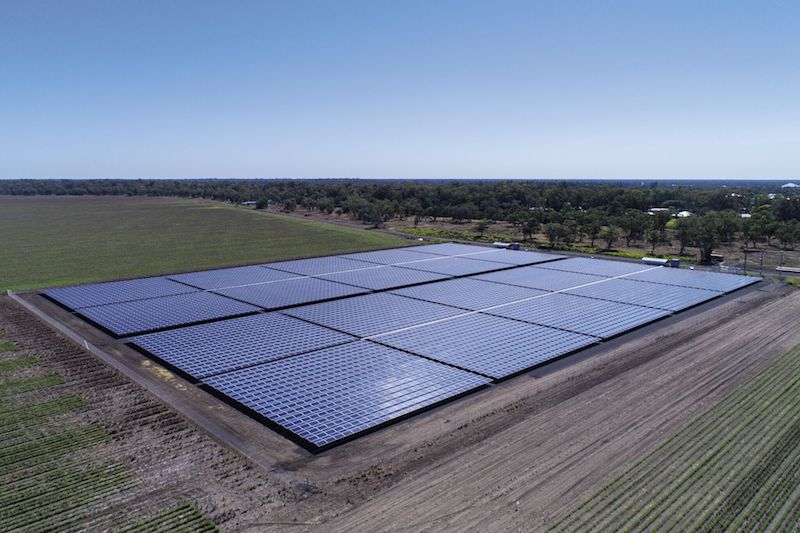With the market surging, the Chinese solar downturn could present a major windfall for Australian PV project developers. While the extent of module price declines, on the back of reduced Chinese market demand is yet to become fully clear, the advance of big solar’s competitiveness is set to continue throughout 2018.
Initial module price declines are already evident in many markets, despite some Chinese manufacturers scaling back production to limit oversupply. However, prices are undoubtably down and in the medium to long term, the trend towards cheaper modules is clear.
Rystad Energy’s Ben Willacy tells pv magazine Australia that if prices were to decline by 20-30%, as has been forecast by some analysts, installed large scale solar prices could head towards $1/W DC.
“This in turn could drive breakeven prices below $60 per megawatt hour, depending on the rate of return targeted by project owners,” says Willacy. “This would place the cost of utility scale solar below the forward price curve for most Australian states and territories, ensuring it remains competitive despite falling wholesale electricity and LGC prices.”
First to take note of the new emerging competitive reality for PV would be commercial and industrial electricity users, says Willacy, particularly in light of the growing number of bilateral PPAs being entered into by solar farm owners and large electricity consumers and independent retailers. The outlook for merchant PV projects, however, is not so straightforward.
Popular content
“The extent to which it [a significant module price decline] will help proponents of merchant solar farms secure funding is difficult to say,” says Willacy. “Spot and forward electricity prices have fallen significantly over the past year, and LGC prices are likely to taper towards zero beyond 2020. Even with falling module prices, backers of merchant projects will require a strong appetite for risk; we may see an increasing number of projects with some contracted volumes and some simultaneous proportion of merchant exposure to allow for potential price upside.”
For Chinese module makers themselves, many of which have project development operations, they may to look to the Australian market to secure a pipeline of projects that can consume some of their production. Willacy observes that such a s strategy would “make sense for panel manufacturers… in the current environment.”
Indeed, there has already been activity from tier-1 Chinese module manufacturers including Canadian Solar and Risen Energy, both of which have acquired early stage projects in New South Wales and Queensland respectively. Risen has indicated that it intends to use its in-house modules on its 121.5 MW Yarranlea project. However, Rystad’s Willacy notes that some “integrated manufacturers in some instances run competitive processes for their equipment procurement and may not necessarily favour their own brand of panel.”
This content is protected by copyright and may not be reused. If you want to cooperate with us and would like to reuse some of our content, please contact: editors@pv-magazine.com.



By submitting this form you agree to pv magazine using your data for the purposes of publishing your comment.
Your personal data will only be disclosed or otherwise transmitted to third parties for the purposes of spam filtering or if this is necessary for technical maintenance of the website. Any other transfer to third parties will not take place unless this is justified on the basis of applicable data protection regulations or if pv magazine is legally obliged to do so.
You may revoke this consent at any time with effect for the future, in which case your personal data will be deleted immediately. Otherwise, your data will be deleted if pv magazine has processed your request or the purpose of data storage is fulfilled.
Further information on data privacy can be found in our Data Protection Policy.